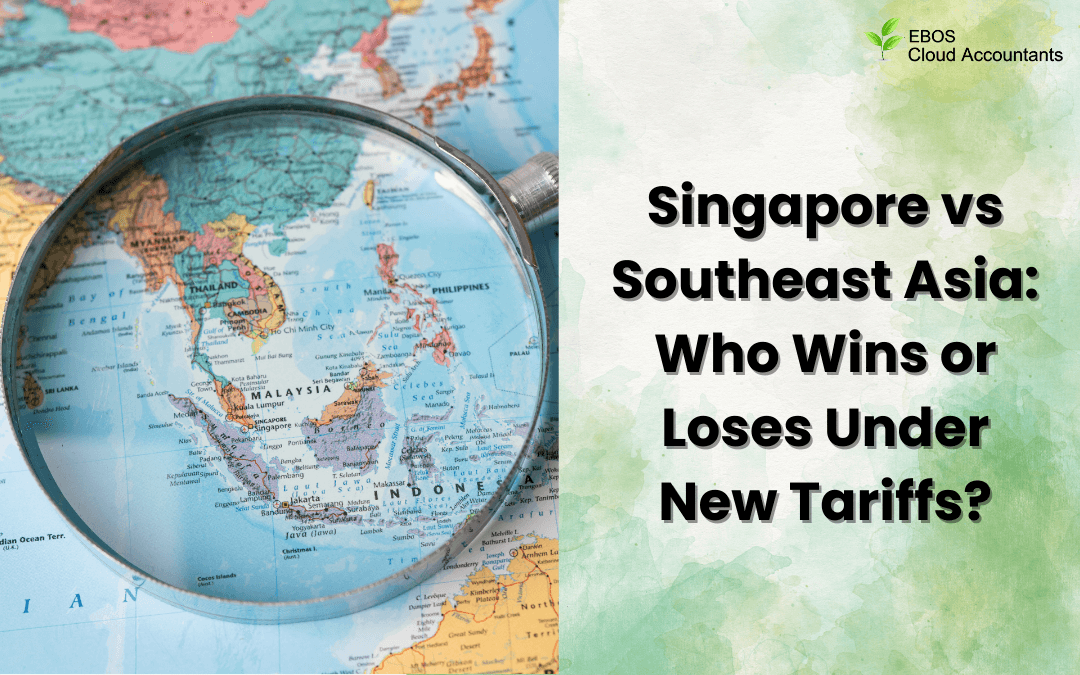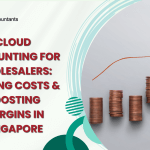As former U.S. President Donald Trump ramps up rhetoric around sweeping new tariffs—particularly against China—the global trade landscape is once again being redrawn. While most attention has focused on the U.S.-China dynamic, the impact is already being felt across Southeast Asia. Amid the looming tariff storm, one key question arises: Who benefits more—Singapore or its regional neighbors?
Let’s break it down.
Trump’s Tariff Revival: A Quick Recap
Trump has floated plans for universal tariffs on imports and a staggering 60% duty on Chinese goods should he win re-election. The goal? Reshore American industry and punish “unfair trade” by rivals like China. But the side effects are massive: destabilized supply chains, costlier goods, and global economic spillovers.
For Southeast Asia, this isn’t unfamiliar territory. The 2018–2020 U.S.-China trade war forced companies to rethink where they produce, source, and ship goods. Now, that same recalibration is back—and it’s reshuffling winners and losers in the region once more.
Singapore: The Strategic Safe Haven
✔ Neutral Ground
Singapore doesn’t pick sides. That neutrality makes it an attractive landing spot for multinationals exiting tense political climates.
✔ Logistics & Connectivity
With one of the world’s top ports, a strategic location at the heart of Asia, and world-class digital infrastructure, Singapore is primed to be a command center for regional and global trade.
✔ High-Value Services Hub
Singapore may not be a low-cost manufacturing base, but it excels in high-value services: finance, legal, supply chain orchestration, tech, and innovation. It’s the brain of the operation, even if the brawn is elsewhere.
But… Not a Manufacturing Powerhouse
While Singapore benefits from trade rerouting and increased HQ relocations, it doesn’t absorb as much of the actual production shifting out of China.
Southeast Asia’s Manufacturing Boom: Who Wins?
Several of Singapore’s neighbors stand to gain—but not equally.
Vietnam: The Manufacturing Star
Win: Vietnam has already become a poster child for “China Plus One” strategies. Companies like Apple, Samsung, and Nike have expanded operations here. Tariffs that hurt China could accelerate this trend.
Lose: Vietnam is heavily reliant on Chinese raw materials. Tariffs on Chinese components could still hurt Vietnamese exports down the line.
Malaysia: The Middleweight Challenger
Win: Malaysia is emerging as a strong electronics and semiconductor hub, attracting companies fleeing Chinese costs and uncertainty.
Lose: Political instability and bureaucratic friction sometimes hold it back from capturing full investor confidence.
Indonesia: The Sleeping Giant
Win: Indonesia has potential: a huge labor force and rich natural resources. The government is pushing for more foreign investment with reforms and incentives.
Lose: Infrastructure and regulatory complexity are hurdles that slow down its ability to absorb large-scale shifts quickly.
Philippines & 🇹🇭 Thailand: Mixed Bags
Philippines: Strong in BPO and growing interest in electronics. But political volatility and logistical challenges can be deterrents.
Thailand: Good base for automotive and electronics, with strong industrial zones. But aging demographics and internal politics present medium-term risks.
Who Really Wins or Loses? It Depends.
| Country | Key Strength | Risk Factor | Tariff Impact Potential |
|---|---|---|---|
| Singapore | HQs, finance, logistics, legal | Not a manufacturing base | 🟡 Moderate benefit |
| Vietnam | Export manufacturing, pro-business policies | Overreliance on Chinese inputs | 🟢 Strong benefit |
| Malaysia | Electronics, semi-skilled labor | Bureaucracy, inconsistent policies | 🟢 Moderate to strong |
| Indonesia | Scale, resources | Infrastructure, red tape | 🟡 Limited to emerging |
| Thailand | Auto, electronics | Demographics, political risk | 🟡 Mixed |
| Philippines | BPO, English-speaking workforce | Logistical challenges | 🟡 Niche opportunities |
Singapore’s Real Advantage: Being the Hub
The smart money isn’t on “either/or.” In fact, Singapore often wins because its neighbors are growing. It serves as:
-
The HQ for regional operations
-
The port through which goods transit
-
The financial center funding Southeast Asia’s rise
-
The dispute resolution hub when deals go wrong
As Southeast Asia’s manufacturing base grows due to tariff-driven shifts, Singapore remains the digital, financial, and logistical nerve center for these activities.
Conclusion: Complementary, Not Competitive
Under new tariffs, Southeast Asia may experience a regional economic shuffle—but not necessarily a zero-sum game. Singapore is likely to benefit from higher-level trade and capital flows, while countries like Vietnam, Malaysia, and Indonesia may scoop up the manufacturing fallout from China.
Instead of Singapore vs. Southeast Asia, the more accurate narrative might be: Singapore and Southeast Asia, rising together—just in different lanes.
Enjoyed this article? Curious to learn more about incorporation? Click here for more insights!







